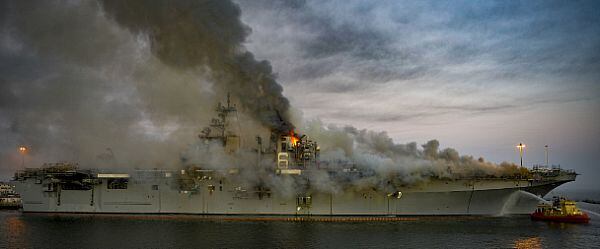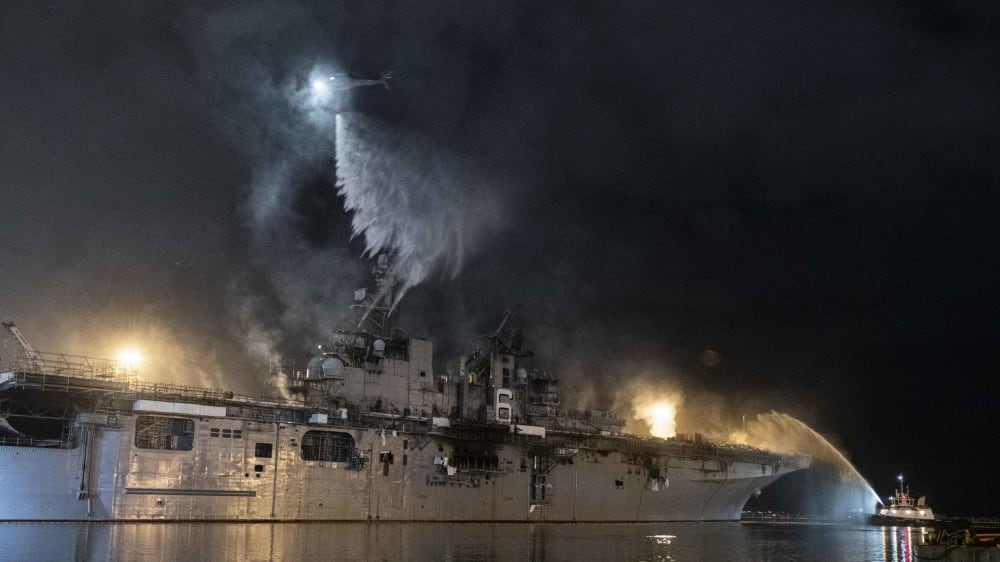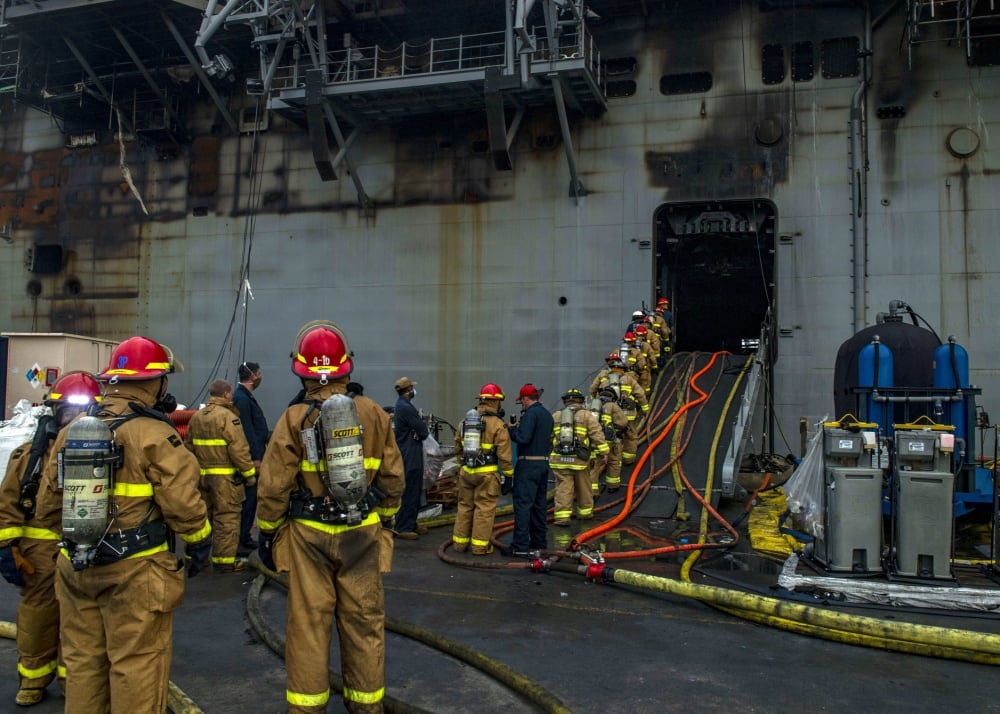As the battle to contain the fire aboard the amphibious assault ship Bonhomme Richard entered its third day in San Diego, Navy officials reported progress in the fight.
While two separate fires burned at the front and aft of the amphib, investigators found no damage to the four main engineering spaces, according to Expeditionary Strike Group 3 commanding officer Rear Adm. Philip Sobeck.
The 1 million gallons of fuel aboard Bonhomme Richard also appear to be safer from ignition or spillage than yesterday, Sobeck told reporters at an 11 a.m. PDT press conference.
“There is no threat to the fuel tanks, which is well below any active fires or heat sources,” he said. “The ship is stable and the structure is safe.”
Helicopters have dropped more than 1,000 water buckets on the ship’s exterior, which has cooled it enough to allow crews on board to fight the fire, he said.
RELATED

Sobeck said it was “absolutely possible” that the fire could be out in the next 24 hours.
As of late Tuesday morning San Diego time, 61 personnel, included 38 sailors, had been treated for minor injuries that included heat exhaustion and smoke inhalation, but none remain hospitalized, Sobeck said.
Hundreds of sailors from the area have taken part in the firefighting efforts, as have federal firefighters and civilian counterparts.
The Bonhomme Richard’s fire was called away at 8:30 a.m. Sunday and is believed to have started in a cargo hold of the ship, which Sobeck said was full of shipyard maintenance materials as the amphib underwent extensive maintenance and upgrades to accommodate the F-35B jet.
The ship’s forward mast collapsed Monday and its superstructure has suffered widespread damage.
Acrid plumes of smoke have filled the skies over San Diego as the varied contents of the ship went up in flames.
U.S. Coast Guard assets are standing by should any fuel escape the burning ship, but Sobeck said “the risk is very low” of any fuel spilling from the ship or catching fire.
“It’s well beneath the water line, where the fuel is,” he said. “It’s the safest part of where the ship is.”
The Coast Guard has preemptively deployed a protective boom to guard against oil or fuel spills into the San Diego waters and has spill mitigation equipment at the ready just in case, the service said in a statement Monday night.

While the trajectory of the fire’s spread remains unclear, Sobeck said the design of the amphib may have fostered the spread.
“For this class of ship, the open area above the vehicle storage is all open, a big hangar,” he said. “Once the fire hit that amount of oxygen, it found other ways to go up.”
He also said that all the cables snaking through hatches and scuttles as the ship underwent maintenance helped fuel the fire.
When the fire broke out Sunday, sailors were energizing the foam suppression system on board when an explosion occurred, Sobeck said.
“The explosion happened and they had to egress,” he told reporters.
Whether the amphib can be salvaged and repaired remains to be seen, Sobeck said.
“We haven’t been inside the ship well enough to get a fuller picture,” he said.
“It looks cleaner from the outside,” Sobeck added. “Inside, we’re still fighting a major fire.”
Geoff is the managing editor of Military Times, but he still loves writing stories. He covered Iraq and Afghanistan extensively and was a reporter at the Chicago Tribune. He welcomes any and all kinds of tips at geoffz@militarytimes.com.




